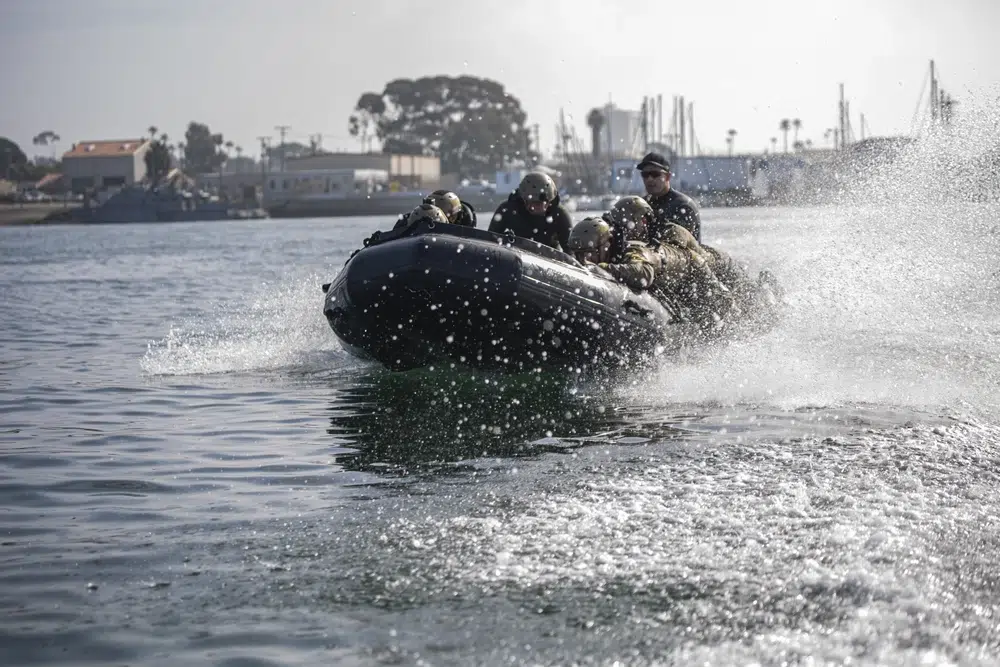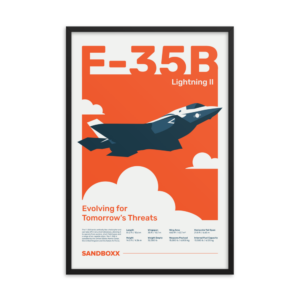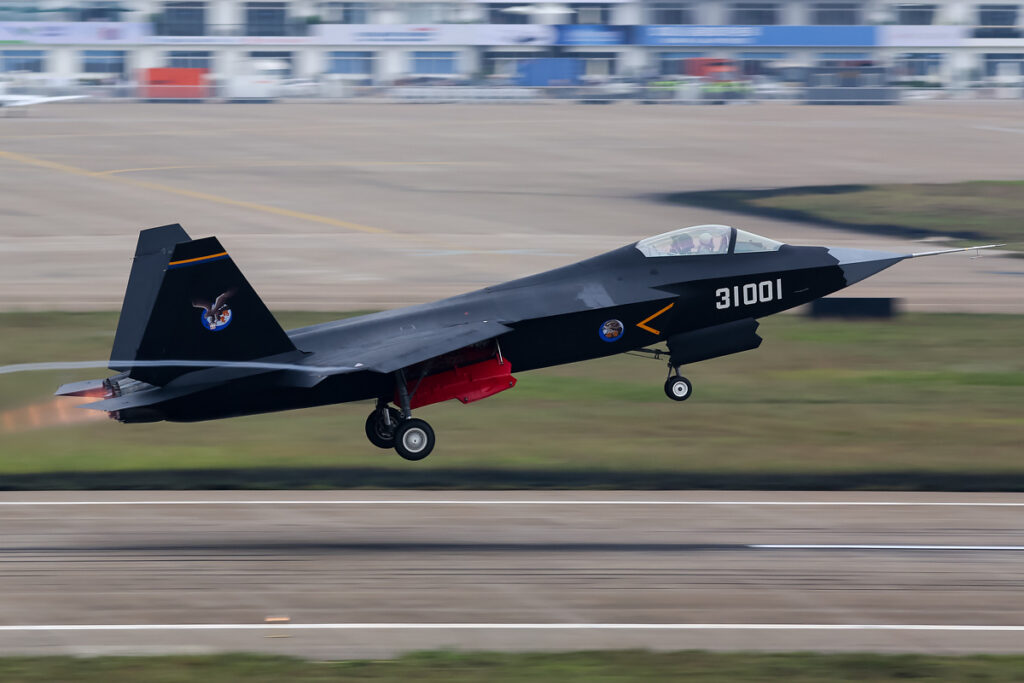This is what it takes to become a legendary Marine Raider
- By Sandboxx
Share This Article

Disclaimer: This article was sponsored by the Marine Corps Special Operations Command (MARSOC) and contains content developed in collaboration with their team.
Being a U.S. Marine is not for the faint of heart. For nearly 250 years, the Marine Corps has answered our nation’s call in numerous conflicts across the globe and has traditionally been the U.S. military’s tip of the spear. And the most elite warriors of the Corps are the Marine Raiders.
Marine Raiders fall under Marine Forces Special Operations Command (MARSOC), the Marine Corps special operations component of the U.S. Special Operations Command (SOCOM). MARSOC is comprised of the Headquarters, Marine Raider Regiment, Marine Raider Support Group, and Marine Raider Training Center.
To become a Marine Raider, a candidate must first join the Marine Corps. Whether one is an officer or enlisted, MARSOC has a place for you. Commissioned Marines can volunteer to be a Special Operations Officer (SOO), while enlisted Marines can pursue roles as Critical Skills Operator (CSO) or Special Operations Capability Specialist (SOCS).

To be eligible to become a Special Operations Officer, an officer must meet the following requirements:
- Be eligible to obtain and maintain a secret clearance;
- Have a minimum GT/GCT score of 110;
- Have a minimum PFT of 235;
- Be able to pass the MARSOC swim assessment;
- Meet the MARSOC medical screening criteria;
- Have no more than 24 months time in grade (TIG) as a captain (O-3) upon attending the Individual Training Course (ITC) Make a lateral move to the special operations officer MOS upon selection.
Related: What exactly is MARSOC, the Marines’ elite special operations component?
The requirements for enlisted Critical Skills Operators are a bit different:
- Be eligible to obtain and maintain a secret clearance;
- Have a minimum GT score of 105;
- Have a minimum PFT of 235;
- Have no more than two NJPs on current enlistment;
- Be able to pass the MARSOC swim assessment;
- Be eligible to reenlist;
- Meet the MARSOC medical screening criteria;
- Have no more than 18 months time in grade (TIG) as a sergeant (E-5) upon attending the Individual Training Course (ITC) Make a lateral move to the critical skills operator MOS upon selection.
A Marine Raider candidate must then pass Assessment and Selection and complete the Individual Training Course (ITC) at the Marine Special Operations School in Camp Lejeune, NC. Here’s how that plays out:
Assessment & Selection Phase 1

The three-week Assessment and Selection Preparatory and Orientation Course (ASPOC) begins the training pipeline. Candidates will be challenged mentally and physically during this phase.
Assessment & Selection: Phase 2
Assessment and Selection Phase 2 is a challenging three-week evaluation to identify Marines with certain attributes compatible with special-operations missions and with working in a small-team environment.
Individual Training Course (ITC)
The ITC training occurs in four phases and takes place over nine months of intensive training. Those four phases break down as follows:
Phase 1 – Basic Skills
Phase 1 trains and evaluates students in basic skills including land navigation, patrolling, mission planning, SERE (Survival, Evasion, Resistance, and Escape), TCCC (Tactical Combat Casualty Care), fire support, and communications.
Related: The history of MARSOC is the history of the Marine Raiders
Phase 2 – Small unit tactics

Phase 2 consists of small boat and scout swimmer operations, crew-served weapons training, demolitions, photography, and information collection and reporting.
Phase 3 – Close-quarters battle (CQB)
Phase 3 consists of rifle and pistol combat marksmanship, the tactics, techniques, and procedures (TTPs) needed to serve as a Marine operator during assault operations.
Candidates will also conduct a series of full-mission profile precision raids on rural and urban objectives.
Phase 4 – Irregular warfare
In the final phase of ITC, Marine Raider candidates put all their newfound skills to use. The candidates will receive instruction on irregular warfare operations and on training, advising, and operating with a partner nation and irregular force.
Upon graduation, MARSOC enlisted Marines are awarded the primary MOS 0372, Critical Skills Operator. CSOs then go on to attend a six-month basic language course.
Related: MARSOC Raiders to deploy in smaller, tech-loaded teams as conflict gets more complex
Special Operations Capability Specialists

But while Critical Skills Operators and Special Operations Officers make up the fighting backbone of MARSOC, you can also earn the title of Marine Raider as a Special Operations Capability Specialist (SOCS). While the route to MARSOC is slightly different for these Marine Raiders, it isn’t without its own unique challenges.
These SOCS directly support Marine Raiders on the ground and from the tactical operations center in several ways, including intelligence, fire support, tactical communications, and K-9 operations. SOCS can be assigned to tactical and operational units. In total, there are 11 SOCS specialties, each with its unique attributes and contributions to the team.
SOCS start their journey in MARSOC with the Special Operations Forces Training Course, where they learn the fundamentals of the special operations trade. Those who make it through, proceed to the Survival, Evasion, Resistance, and Escape (SERE) course. In SERE, SOCS learn how to escape enemy forces, survive in the wild, and resist interrogation. SOCS who graduate SERE become proficient in their specific MOS before getting assigned to MARSOC on a five-year tour.
Are you ready for the challenge of becoming a Marine Raider? Contact a Recruiter today.
Read more from Sandboxx News
- What exactly is MARSOC, the Marines’ elite special operations component?
- The history of MARSOC is the history of the Marine Raiders
- We asked AI to create images of top-secret new stealth aircraft and these were the results
- Famed Ukrainian pilot known as ‘Juice’ killed in crash
- Why aircraft carrier crews wear different shirt colors – and what they mean
Related Posts
Sandboxx News Merch
-

‘Kinetic Diplomacy’ Bumper Sticker (Black)
$8.00 Add to cart -

A-10 ‘Warthog’ Poster
$22.00 – $28.00 Select options This product has multiple variants. The options may be chosen on the product page -

F-35 ‘Evolution’ Framed Poster
$45.00 – $111.00 Select options This product has multiple variants. The options may be chosen on the product page

Sandboxx
The editorial team at Sandboxx.
Related to: Special Operations

The CIA used miniature models to meticulously plan high-stakes operations

Video: How good is China’s new stealth fighter?

Who dares wins: The importance of defeat in being successful

Marines deploy new system to take out ships in the Pacific
Sandboxx News
-

‘Sandboxx News’ Trucker Cap
$27.00 Select options This product has multiple variants. The options may be chosen on the product page -

‘AirPower’ Classic Hoodie
$46.00 – $48.00 Select options This product has multiple variants. The options may be chosen on the product page -

‘AirPower’ Golf Rope Hat
$31.00 Select options This product has multiple variants. The options may be chosen on the product page -

‘Sandboxx News’ Dad Hat
$27.00 Select options This product has multiple variants. The options may be chosen on the product page
